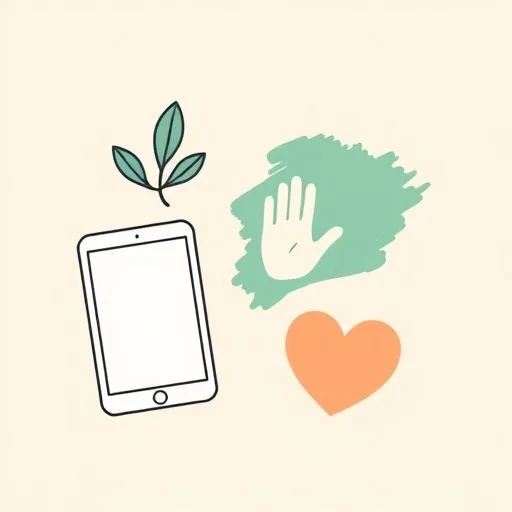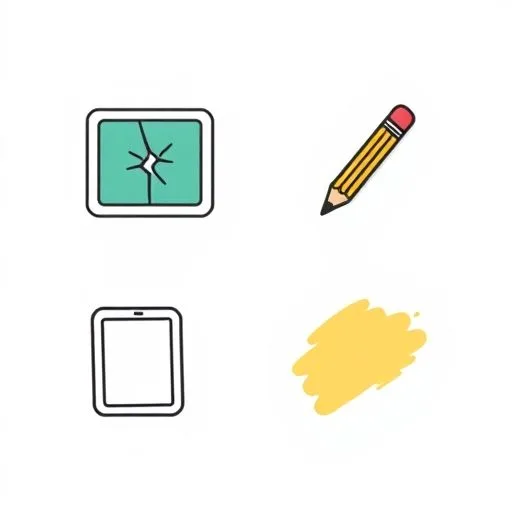
We’ve stood there, haven’t we? Watching our kids swipe through screens like they’re navigating a world they already understand. But it’s that quiet moment you’ve probably noticed—the way she lowers the screen at bedtime, fingers brushing the case, like she’s balancing something fragile. We’ve felt the weight of that screen, too. Not just the glass, but the choices we make for them each day. That’s where the real magic of parenting kicks in.
You’ve Seen Their Screens. But Have You Seen Their Eyes?

There’s that look in small children—when they’re holding a tablet, but not really. They’re somewhere else. Imagination. We’ve all seen it. But we’ve also seen something else: the way she’ll pause, just a moment too long, before letting them dive into the digital world.
That hesitation. That’s wisdom. It’s the knowledge that while screens can teach, they can’t replace—not the warmth of dirt crumbling between fingers, not the arguments that come from building a block tower, not the quiet wonder of a real caterpillar crawling across the skin.
AI tools can help with math homework. But they can’t ask the questions that matter. ‘Why are stars kind?’, ‘Why does the moon follow us?’ Those are the moments that human connection builds on. And those pauses? We’ve both noticed—they’re the moments where parenting becomes a work of art.
What Doesn’t Change in the Digital Storm: Six Truths

We’ve been in the middle of so many of those moments. Lights out. Screens off. But the quiet. That’s when the real conversation happens. Here’s what we’re learning about raising kids in the AI era, and how to keep the human in the equation:
- They still need to feel safe with reality—not just the digital world. The way she’ll kneel to look at their first imaginary bug, not just the digital one, creates that connection.
- The questions are more important than the answers—AI can answer, but humans teach. We’ve seen her patiently guide them to ask ‘why’ instead of ‘how’, and that? That makes all the difference.
- They learn by watching our hands—not just the screens. We modeled that, you and I.
- Creativity still comes from making messes—not just clean pixels. The way she’ll let them mix paints and not worry about digital perfection is pure gold.
- The best way to protect their future is not to fear AI—but to help them understand it. That’s where you step in, finding that balance between guidance and freedom.
- They’ll remember the way we were present—not the devices we didn’t give them. Your presence is the anchor in their digital world.
That strength in parenting comes from the small, everyday decisions—the ones that are rarely noticed, but deeply felt.
The Three-Minute Rule: How to Bridge the Digital Divide

We’ve tried this together. It’s so simple, but here’s a parenting hack for the digital age: For every three minutes of screen time, spend three minutes in the real world. That’s your chance to create connection.
We started by doing this—after they watched a drawing tutorial, we’d hand them real paper and messy pencils. No screens. Just hands. Elbows deep in the process. It also helps them to see the difference between digital and real life, and how joyful they can be in the analog world.
We’ve also seen how critical it is to teach kids about AI—not just let them use it. Take the time to explain the line between the human and the algorithm. It builds trust. It’s like teaching them to ride a bike—they might wobble, but they need to know the difference between the road and the simulation.
Short, sharp conversations about the technology they’re using. Trust me.
We’ve transformed our parenting by making a simple rule: prompts for the AI, but questions for the child. The robot asks, ‘What do you want to know?’ But we—as parents and teachers—we ask, ‘What do you want to explore?’ That’s the difference.
Through that small shift, we’re not just keeping up—we’re guiding them to navigate the digital world with a strong human heart.
The Future of Parenting: Stronger Together in the Digital Age

Sometimes, we’ve been tempted to feel like we’re fighting a digital tide. But parenting isn’t about holding them back. It’s about helping them carry forward. The way we model that—the way you’ve modeled it—simply your presence. Show them.
Screens, AI, and all—they can’t replace the human spirit. We’ve seen that in the quiet moments.
Practical tips for families? We’ve got to start with ourselves. We’ve got to be the first to put down our phones. The first to set boundaries. The first to be real. Because parenting isn’t about making them perfect. It’s about making them present.
We’ve seen them grow, and we know they’re watching us, too. And it’s like… this circle, you know?
That’s the heart of the story we’re living. The one that we’ve felt together—and that we’re passing on to them. The one that will last long after the screens are forgotten.
Source: Meta’s Zuckerberg warns of potential AI bubble but favors heavy investment in US tech sector, Digitimes, 2025-09-29
